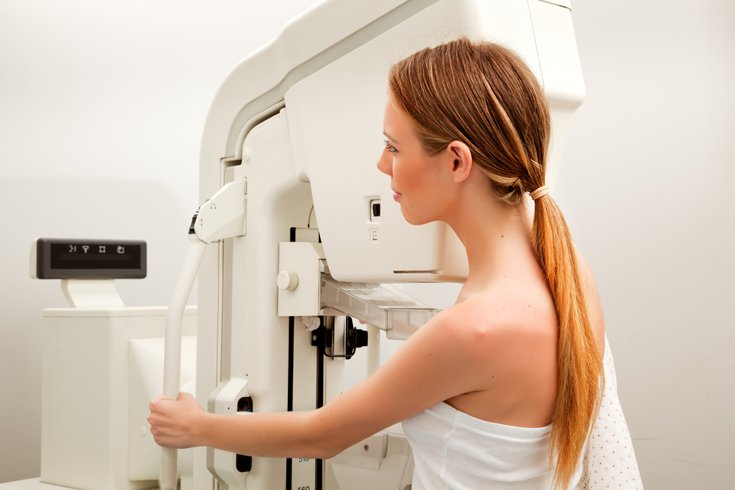
October 07, 2019
 Source/Image licensed from Ingram Image
Source/Image licensed from Ingram Image
If caught early, the survival rate for breast cancer is very high. That's why mammograms are so important.
If you have been putting off scheduling your first mammogram, Breast Cancer Awareness Month seems like the perfect time to make that call.
One in eight women in the United States will develop breast cancer during their lifetimes, according to Susan G. Komen. But survival rates are very high when the cancer is discovered at an early stage.
That's why early detection and treatment is crucial.
A mammogram, a screening in which your breasts are X-rayed, is the best method for detecting the early signs of breast cancer.
There are different recommendations on when a woman should start getting regular screenings, but in general, most women should have their first mammogram around 45 or 50 years of age. The U.S Centers for Disease Control and Prevention parovides a full listing of recommendations.
You will be asked to undress from the waist up (a hospital gown will be given for you to wear) and stand in front of an X-ray machine. Then a technologist will place your breasts, one at a time, on a plastic plate. A second plate will come down from the machine to flatten your breast in order to capture the best possible pictures.
Several photos of each breast taken at different angles are needed. The flattening of your breast may feel uncomfortable, but it only lasts for a few minutes.
The American Cancer Society recommends scheduling your mammogram at a time when your breasts are not tender or swollen, particularly avoiding the week prior to your period. This will reduce discomfort and improve the pictures.
If possible, get your mammograms at the same facility so that they can be easily compared from year to year.
Also, your technologist will not be able to give you your results immediately. You and your doctor typically will receive them within a few weeks.
Diagnostic mammograms are conducted when a woman displays potential cancer symptoms or if a screening mammogram reveals breast changes.
“More pictures are taken during a diagnostic mammogram with a focus on the area that looked different on the screening mammogram," according to the American Cancer Society. "In some cases, special images known as spot views or magnification views are used to make a small area of concern easier to see.”
Monthly self-exams are also important parts of self-care. Watch out for these symptoms:
• A lump in the breast or a breast that looks swollen
• Swelling or a lump in your armpits
• Changes in the look or texture of the skin or nipple
• Pain in the breast
Regardless of your age, if you discover something worrisome during your breast self-exam, talk to your doctor about scheduling a mammogram as soon as possible.